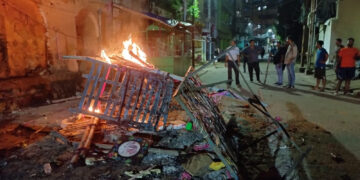 Jammu and Kashmir: In the wake of heightened security concerns, the Jammu and Kashmir government has taken decisive action by closing 48 out of 87 tourist destinations across the region. The move comes just days after the tragic Pahalgam attack, where 26 civilians lost their lives in a brutal terror strike at one of the most popular tourist spots in Kashmir.
Jammu and Kashmir: In the wake of heightened security concerns, the Jammu and Kashmir government has taken decisive action by closing 48 out of 87 tourist destinations across the region. The move comes just days after the tragic Pahalgam attack, where 26 civilians lost their lives in a brutal terror strike at one of the most popular tourist spots in Kashmir.
The government’s swift response is aimed at preventing further tragedies and ensuring public safety. Notably, famous destinations like Yousmarg, Doodhpathri, Verinag Garden, and Sinthan Top are now out of bounds for travelers. The closures are temporary but have had an immediate and profound impact on Kashmir tourism, a vital economic pillar for the region.
The Pahalgam attack has left the Union Territory in shock, severely affecting the morale of local communities who depend heavily on the inflow of tourists. Previously bustling markets in places like Pahalgam have now fallen silent, and hotel bookings have plummeted as tourists either cancel their plans or leave the valley prematurely.
In addition to the shutdown of tourist destinations, a sharp decline in passenger traffic at Srinagar Airport has been reported. On April 23, the day after the attack, 17,653 passengers were recorded. However, the numbers have been steadily declining, indicating widespread fear and uncertainty among visitors. While flight operations have not been suspended, the reduced load factor is a stark reminder of the chilling effect the incident has had on Kashmir tourism.
List of Popular Tourist Spots Now Closed
The list of closed destinations is extensive. It includes popular spots such as Aharbal, Bangus Valley, Habba Khatoon Point, Babareshi, and tourist facilities like Padshapal Resorts and Restaurants and IVORY Hotel. Eco-tourism sites like Eco Park Khadniyar and Eco Village Resort Dara are also on the list, further highlighting the widespread impact of the preventive closures.
Beyond the visible effects on tourism, the Jammu and Kashmir administration has intensified anti-terror operations across the region. Police and security agencies have conducted raids at over 1,000 locations in areas such as Srinagar, Doda, and Kishtwar. These operations are aimed at dismantling the terror infrastructure and disrupting the networks that facilitate such heinous attacks.
Officials reported the demolition of properties associated with suspected terrorists and their sympathizers under the Unlawful Activities (Prevention) Act (UAPA). In Srinagar alone, 34 houses were searched as part of efforts to collect intelligence and evidence to thwart future threats.
The government emphasized that these measures were carried out under strict legal protocols, with the presence of Executive Magistrates and independent witnesses to ensure transparency.
While the actions taken may seem extreme, local authorities stress that the decision to close major tourist destinations and ramp up anti-terror operations is crucial to restoring normalcy. They argue that maintaining peace and protecting lives must be the foremost priority, even at the cost of short-term economic setbacks in Kashmir tourism.
Local Economy Suffers Amid Kashmir Tourism Freeze
For residents of Jammu and Kashmir who depend on the tourism sector, the developments have been deeply unsettling. Many fear the ripple effect of the closures could result in widespread unemployment and economic hardship if the situation does not stabilize quickly. In towns like Pahalgam, where tourism supports almost every business—from hotels to handicraft sellers—the decline in visitors is more than just a financial blow—it is a threat to their way of life.
As the Jammu and Kashmir administration continues its efforts to secure the region, stakeholders in the tourism industry hope for a swift resolution that will allow them to rebuild confidence among visitors. However, for now, the valley stands at a crossroads, grappling with the aftershocks of the Pahalgam attack and the difficult road to recovery.
Future of Kashmir Tourism Hangs in the Balance
As the situation unfolds, the resilience of Jammu and Kashmir’s tourism sector will be tested. While the valley’s stunning landscapes continue to attract visitors worldwide, rebuilding trust and ensuring security will be crucial for the long-term revival of tourism in Jammu and Kashmir.

















